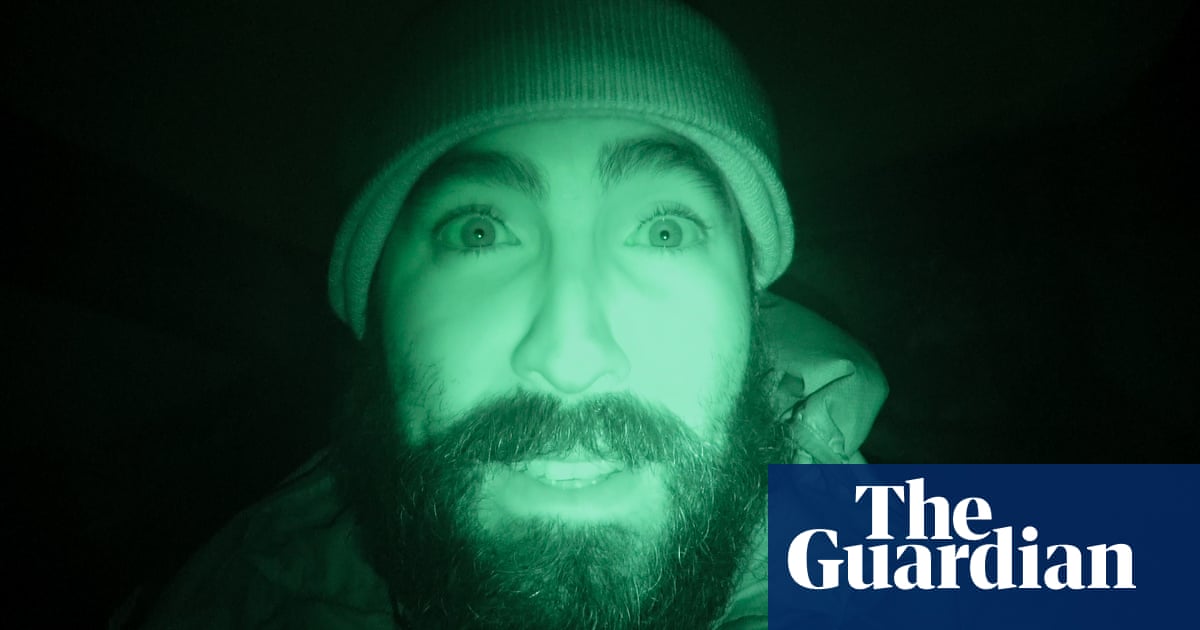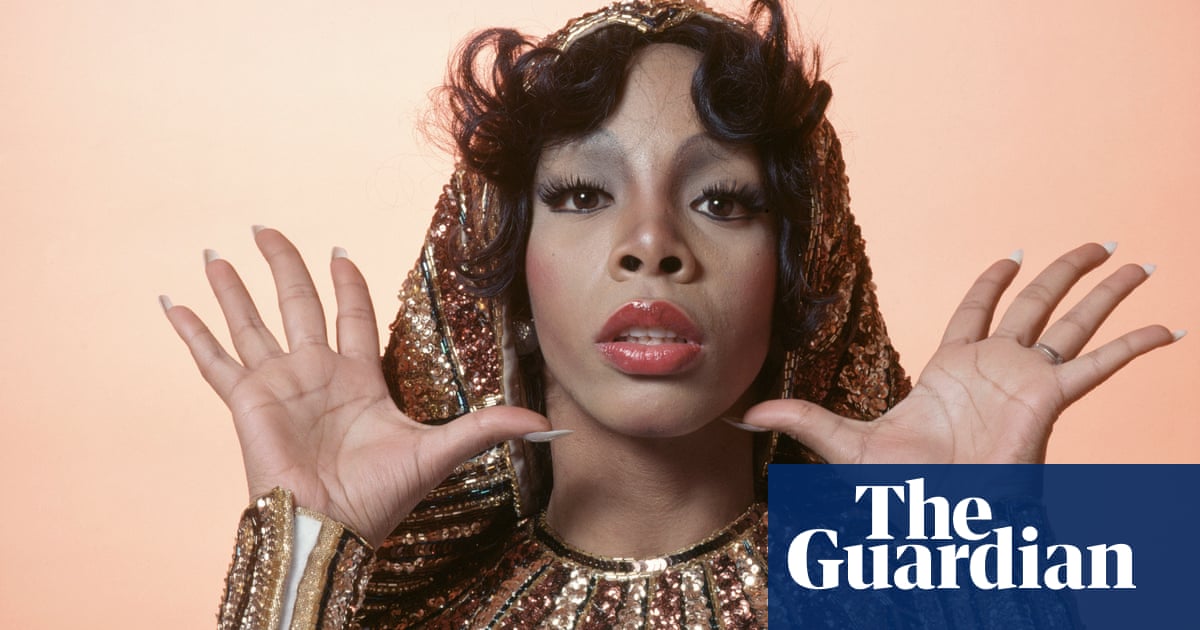
It’s nearly midnight and Kaila Cumings is curled up naked outside in the dust. She can hear noises beside her head: hot breaths, sniffing, a growl. There are two male lions circling her shelter, which is composed of just a few thin branches piled together. Earlier that day, lions killed and ate two poachers in the surrounding area of Limpopo, South Africa. Now they’d tasted human flesh, Cumings had been warned by camp rangers that they may be looking for more. So she waits, naked and afraid, which is, incidentally, the title of the Discovery+ survival show that she is appearing on: Naked and Afraid XL.
The popular franchise – in which survivalists tough it out in the wilderness, totally nude – isn’t the only TV series you’d sit and watch at home and think, this is batshit. Over the years, we’ve been presented with all manner of dangerous situations on screen, many of them involving extreme, punishing conditions. More recently, such shows have gained new popularity. Explosive endurance competition Outlast arrived on Netflix in March, and has been commissioned for a second series. Survivor, first aired in 2000, is coming back to the UK this year via the BBC. And we now have a UK version of Alone (already popular in the US and Australia) on Channel 4, in which 11 people must fend for themselves in remote north-west Canada, among wild bears and wolves. The last contestant standing wins £100,000.
Despite her brushes with death, Cumings, 35, has appeared on four seasons of Naked and Afraid in different locations. During one season in the Peruvian Amazon, she tapped out early due to being practically eaten alive by ants. “I was going into anaphylactic shock because I had so many bites and my foot was infected,” she remembers. Another time, she had to fight off a deadly black mamba snake with an arrow. “This thing had to be about 15ft (4.6 metres) long. It was massive. They can stand up on the back of their tail and strike you and I thought, ‘I’m going to die’. So I started shooting at it. I was shaking so much that I kept missing. That was surreal.”
Contestants on Naked and Afraid are given radio devices to contact medics in case of an emergency. But, Cumings says, you’re often left out there on your own, or with other contestants. “You have a camera man, a sound guy and a producer – but they don’t stay with you throughout the day. You’re left with a diary cam to film yourself. If anything happens – and hopefully you haven’t blacked out – you have to grab your walkie-talkie and call the medics. But the medics are usually anywhere from 20 to 45 minutes away.” A bit too long to save you from being mauled by a lion, then.
It might seem astonishing that there haven’t been more casualties on such high-risk productions. But Ian Dunkley, commissioner for Channel 4’s Alone, as well as The Island with Bear Grylls and Eden: Paradise Lost, says that on all the shows he’s worked on, there’s an enormous amount of preparation involved. Contestants on Alone, for example, are put through rigorous days-long training, as well as “medical and psych checks” beforehand. He says: “Once they were in situ there were various health and safety protocols in place. We were doing periodic medical checks – they had to check in twice a day with production, by phone.”
Informed consent is key. “I’m not in the business of killing anybody,” says Dunkley. “Anybody who signed up to the series went into it with open eyes. They’re given what’s known in the business as ‘the talk of death’, explaining the worst that could happen.” The safety documents for Alone, he tells me, were about 50 pages long. Cumings recalls a similar process before appearing on Naked and Afraid: “You have this very, very thick stack of paperwork, saying you’re basically signing your life away,” she says. Crucially, contestants want to be there. They know what is coming, and have often seen prior episodes. “I live for this stuff,” Cumings says.
Still, for Naomi Allsworth, 27, a contestant on Alone, the reality of coming face to face with a roaming bear was wildly different from what she imagined – especially as a British person unused to such predators. “I’d just washed my underwear and a bear came up to them,” she says. “I was like, ‘please don’t take my knickers, I only have two pairs’. It wouldn’t leave for a good 20 minutes. It was fear like I’d never felt … the bear was leaning on my shelter and the shelter was moving slightly. There must have been a few metres between us. When you can hear the huffs and the grunts, no amount of wood can make you feel safe.”
It’s a hypervigilance that stays with you long after leaving the show, says Allsworth, who found it difficult adjusting back to regular life. “Sleeping in a [real] bed was really difficult, the sound of anything was really hard. Getting used to a partner who wanted to show me affection was hard because I’d gone without it for so long. The sound of the airport was terrifying. It was extremely overwhelming. Within days, you’re forced to go back to normality. I’d hear a sound at night and think it was a bear. I was taking fears of the woods to London life, and it was hard to shake that.”
Not every danger on a TV show is related to hungry predators. Outdoor shows come packed with myriad risks: injury, infection, disease. In one episode of Naked and Afraid, contestant Trent Nielsen contracts malaria but continues on with the show.
Benjamin Law, 40, who appeared on Australian Survivor earlier this year, tells me that the rain was so bad during filming in Samoa that he started developing trench foot.
“By the time the sky cleared up, I looked at my foot and there was a massive chunk missing,” he recalls. “It was like I’d been in a bath for a week.” There was no way to dry himself, so he packed his feet with cold ash from the fire. “But that was also quite wet, so it turned into this chalky slurry in my foot.” And what about everybody else? “People were coming down with all sorts of physical ailments … [the show’s creators] actually showed a more sanitised version of what we experienced.”
While all this sounds hellish and twisted, everyone I speak to is weirdly, unanimously positive about their experience. Danger has a way of elevating your mindset, revealing your inner potential. It becomes addictive. And these shows become addictive to those watching at home, too. There is a reason for their enduring popularity. Dunkley says: “The appeal of these sorts of shows is, ‘what would I do? How could I survive on a desert island, and if I was dropped in the wilderness, how long would I last?’.” “So I think that’s the reason that people [keep] coming to those shows, and want to be in them. It’s that personal challenge.”
It’s true: for the contestants, appearing on such shows helps them to discover their hidden capabilities. Dunkley says that, post-show, constants will often shake up their lives. They’ll find new jobs, or move abroad.
Jenny Wu, 41, says she was on a year-long high after appearing on season 26 of the Amazing Race, in which contestants dash around the world completing various challenges. During the finale, she wound up having to scale the Reunion Tower in Dallas, Texas, which stands at 170 metre (561ft) tall. It’s something she never thought she would be able to do.
“I felt invincible afterwards,” she says. “I went into the race not having that much confidence in myself. To finish in the final two was so shocking to me, and so empowering. I was like, ‘I don’t have anything to fear. Who knows what else I can do in the world?”
It’s a sentiment echoed by others. Law sums it up like so: “It was harrowing, upsetting, physically and psychologically scarring. Would I do it again? Most probably, yeah.”
And would Cumings, who was very nearly a lion’s late-night dinner, go on Naked and Afraid a fifth time? “Absolutely,” she says, without hesitating. “In a heartbeat.”












